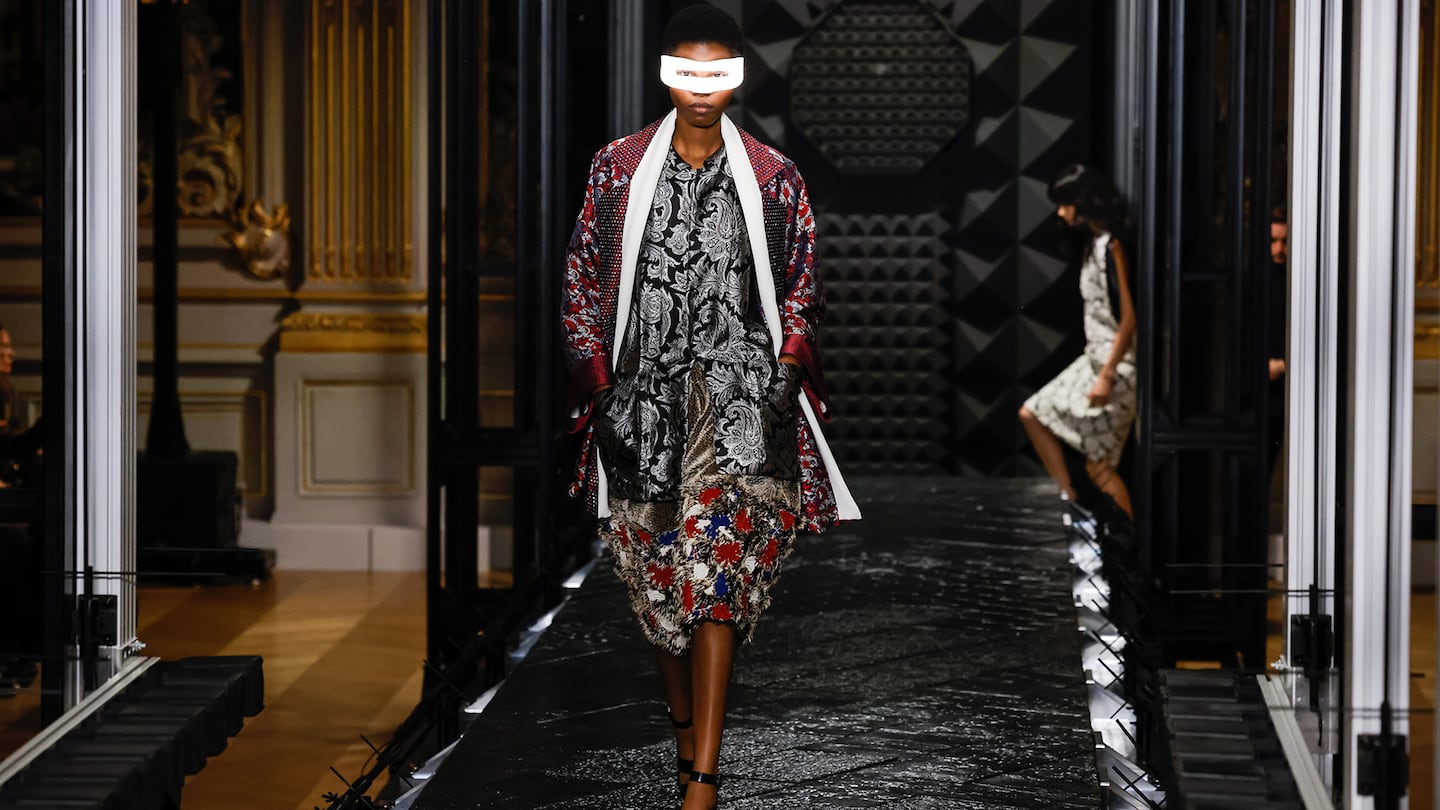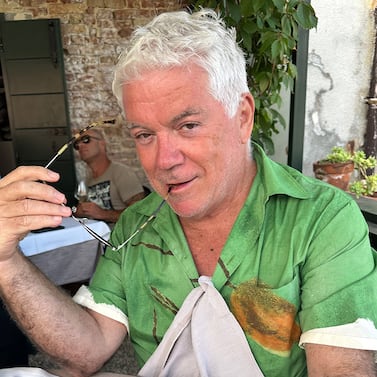
The Business of Fashion
Agenda-setting intelligence, analysis and advice for the global fashion community.

Agenda-setting intelligence, analysis and advice for the global fashion community.

PARIS — Our view of the Vuitton catwalk on Monday was obstructed by a large metal cage, which clearly had something to do with artist Philippe Parreno, once again collaborating with designer Nicolas Ghesquière. Parreno’s work is often about ghosts, absences, transitional spaces and here, working with his own collaborators, production designer James Chinlund and sound designer Nicholas Becker, he created a spectral aural simulacrum of Paris itself, with sounds of the city that Becker had recorded over the last week — dogs barking, cars revving, thunderclaps, falling rain — mixed with the noise of the crowds and traffic outside the Musée d’Orsay, the show venue. The cage was a sound machine — an anechoic chamber — and when the models began their march down the cobblestones-and-asphalt catwalk, the beat of their hearts and the click of their shoes reverberated through the venue.
It was a striking accompaniment to a collection which, according to Ghesquière, was designed to answer the question, What is French style? His show notes suggested “audacious tradition” as a response. There’s often a twisted sense of history in his designs, as here, with the cannetille embroidery inspired by French ceremonial dressing, the stiff white clerical cuffs and collars, the empire line on an extravagantly beaded dress.
0 of 44
Another show note suggestion was “paradox” as something essentially French. Ghesquière has toyed with it plenty in the past, and his new collection was rich with the contradictions that make trompe l’œil such a fashion stalwart: fabric that looked like metal, leather that looked like tweed, hand-painted pinstripes on glossy leather pants, boots painted as pumps. But Ghesquière’s contradictory inclination can also be more challenging than tricks of the eye. A fair number of looks were drawn in tightly at the waist by long thin belts, which played funny games with the silhouettes. And embroidered tunics made a peculiar marriage with funky faux fur culottes. There was an outbreak of patriotic fervour on one such piece, with little explosions of red, white and blue detonating amidst the faux. Another suggestion? French style is a mystery, at least as viewed through Ghesquière’s prism. Hence, his fruitful collaborations with Parreno, where the artist illuminates the collection. Anechoic chambers are used for testing instruments. Vuitton’s jewellery was tiny tubas, trumpets, clarinets and, of course, French horns.
The art of paradox is also the art of the inexplicable. Chitose Abe has made a career out of defying explanation with her hybrid signature. How does it continue to produce such mesmerising clothes? That mystery is their enduring allure. But her latest collection was more interested in elegance than enigma. She’s recognised the need to evolve her kachikan, her values and priorities. So those recombinant showpieces were sidelined here by looks that appeared more conventional, superficially at least. “It’s hybridisation by dissecting very conventional ideas,” Abe explained through her translator, “shifting them over, either to the side, or up to create volume.” Like the shoulder strap which hiked hems on one side, and, as it hiked, also connected with a large flap pocket to create the unconventional illusion of a conventional shoulder bag.
ADVERTISEMENT
0 of 41
If hybrid implies a harmonious blend, Abe was more attracted this time to stark contrast. She said that was why she chose to show her paean to elegance in a grotty, low-ceilinged carpark. Clever, because the industrial backdrop did subtly underscore a spirit of sensuality for the machine age. The tailored black and grey looks that opened the show were cut with a surgical precision. A trench coat was cropped to waist level. Fluted skirts were slashed to give them buoyancy. Flattering movement was key to the collection, as simple as the way a black knit dress with an inset panel of white undulated around the body.
Abe wrapped up the show with a passage of black outfits trailing white basting stitches. The beauty of imperfection is part of her kachikan. “Everything in Its Right Place” was printed on the back of her T-shirt. “Right Place” was written backwards.
Reactions were mixed to the brand's move to appoint a non-designer as men's creative director. But cultural strategies that stretch beyond fashion may be increasingly pivotal for brands at Vuitton's scale.
A performance by pop superstar Rosalía made Louis Vuitton’s menswear show a memorable spectacle, even as the brand has yet to name a successor to designer Virgil Abloh.
Chitose Abe went back to the source, manifested here in the unabashed sensuality and in the sense of humour of distinctly utilitarian elements that were quintessential Sacai.

Tim Blanks is Editor-at-Large at The Business of Fashion. He is based in London and covers designers, fashion weeks and fashion’s creative class.
From where aspirational customers are spending to Kering’s challenges and Richemont’s fashion revival, BoF’s editor-in-chief shares key takeaways from conversations with industry insiders in London, Milan and Paris.
BoF editor-at-large Tim Blanks and Imran Amed, BoF founder and editor-in-chief, look back at the key moments of fashion month, from Seán McGirr’s debut at Alexander McQueen to Chemena Kamali’s first collection for Chloé.
Anthony Vaccarello staged a surprise show to launch a collection of gorgeously languid men’s tailoring, writes Tim Blanks.
BoF’s editors pick the best shows of the Autumn/Winter 2024 season.